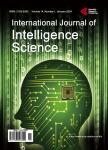Vision and Geolocation Data Combination for Precise Human Detection and Tracking in Search and Rescue Operations
Vision and Geolocation Data Combination for Precise Human Detection and Tracking in Search and Rescue Operations作者机构:Department of Production and Management Engineering Democritus University of Thrace Xanthi Greece
出 版 物:《International Journal of Intelligence Science》 (智能科学国际期刊(英文))
年 卷 期:2020年第10卷第3期
页 面:41-64页
学科分类:0809[工学-电子科学与技术(可授工学、理学学位)] 08[工学]
主 题:Distressed Human Detection Unmanned Aerial Vehicles (Uavs) Search and Rescue (SAR) Operations Aerial Image Processing Image Processing Algorithms
摘 要:In this paper, a study and evaluation of the combination of GPS/GNSS techniques and advanced image processing algorithms for distressed human detection, positioning and tracking, from a fully autonomous Unmanned Aerial Vehicle (UAV)-based rescue support system, are presented. In particular, the issue of human detection both on terrestrial and marine environment under several illumination and background conditions, as the human silhouette in water differs significantly from a terrestrial one, is addressed. A robust approach, including an adaptive distressed human detection algorithm running every N input image frames combined with a much faster tracking algorithm, is proposed. Real time or near-real-time distressed human detection rates achieved, using a single, low cost day/night NIR camera mounted onboard a fully autonomous UAV for Search and Rescue (SAR) operations. Moreover, the generation of our own dataset, for the image processing algorithms training is also presented. Details about both hardware and software configuration as well as the assessment of the proposed approach performance are fully discussed. Last, a comparison of the proposed approach to other human detection methods used in the literature is presented.



